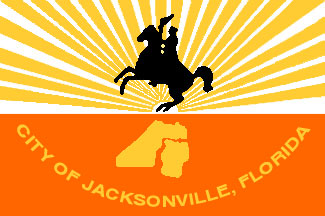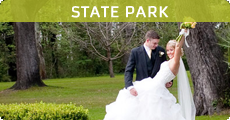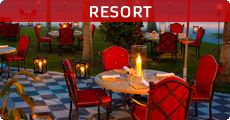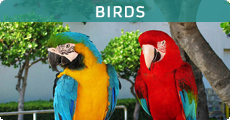Jacksonville , Florida
City Flag
 This is the city flag of Jacksonville, divided horizontally in the ratio
of 2:3 with white over red orange. The white band has the rays of rising
sun in a golden yellow and has a horseman .In the red orange band there
is a map of the city and the words “CITY OF JACKSONVILLE, FLORIDA"
in a color of golden yellow.
This is the city flag of Jacksonville, divided horizontally in the ratio
of 2:3 with white over red orange. The white band has the rays of rising
sun in a golden yellow and has a horseman .In the red orange band there
is a map of the city and the words “CITY OF JACKSONVILLE, FLORIDA"
in a color of golden yellow.
City Seal
 Jacksonville
is a beautiful city located in Duval County of Florida. Jacksonville is
considered to be the chief city of the First Coast region of Florida.
The U.S. Census Bureau recorded their population as 777,704[1] in 2004.
Jacksonville
is a beautiful city located in Duval County of Florida. Jacksonville is
considered to be the chief city of the First Coast region of Florida.
The U.S. Census Bureau recorded their population as 777,704[1] in 2004.
Jacksonville boasts with an extensive land area, it has the greatest land area of any city in the adjoining 48 states of the United States. This city has the largest population in Florida and 12th amongst cities in the United States, exceeding Indianapolis in 2006. in 1996 the population of the are increased to be more than one million.
Jacksonville and the Duval County are under the same government. So people assume that the borders of these two cities remain merged, but accurate reports say that the communities of Baldwin, Neptune Beach, Atlantic Beach and Jacksonville Beach, which lie inside the Duval County, but they do not come under the region of Jacksonville
Jacksonville has an entire area of 874.3 square miles (2,264.5 km²). The original name of this city was supposed to be Cowford; the city got this name because the St. Johns River would be flowing narrow there, exposing a lot of pastures. The cattlemen used that land to herd the cows across the river. But then the city was renamed as Jacksonville in 1822 after the first territorial governor of Florida. His name was Andrew Jackson. Jacksonville.
History
The Timucua were the early residents of Jacksonville, and their existence dates back to some 6000 years ago. Ossachite was the largest town during those times; this town now resides in downtown Jacksonville. This city was discovered first in 1562; by the French Huguenot explorer Jean Ribault when he mapped the St. Johns River. This is considered to be the first European expedition to the area. European settlement was established by René Goulaine de Laudonnière at Fort Caroline in 1564; a year later Spanish took control over the area and four years later the region was abandoned. United States acquired Florida as their territory in 1821, and they renamed the region as "Jacksonville" after territorial governor and future US President Andrew Jackson.
During the civil war Jacksonville was barricaded by the union. This city moved from hand to hand but not even a single war was fought. Olustee was the near by civil war site. Though no wars fought inside the city, the war had damaged the city beyond repair.
The city then underwent a reconstruction phase and afterwards Jacksonville and St. Augustine became luxury winter resort for the rich. Steamboat and railroad were the sources of transport during those days. The commuting by steamboat stopped soon after the extension of rail lines to Miami and Palm Beach. These developments in tourism and transport were stopped abruptly after the yellow fever outbreaks in 1886 and 1888. The city also lost its population when most of the residents started evacuating.
Jacksonville’s destruction did not end with the yellow fever, they were also affected by the fire and this accident is known as the "Great Fire of 1901". This devastating accident happened when hot ashes from the shantyhouse’s chimney fell on the drying moss of cleave lands drying factory. Since this happened during the lunch most of the workers escaped. But the whole block was consumed on fire, and this gave a major blow to the business district and most of the residents lost their homes due to this disaster. Henry Klutho, the renowned New York architect helped reconstructing the city after the accident.
Early during the 1900’s the motion picture industry started visiting Jacksonville. They were attracted due to the pleasant climate, good transport facility and the lack of tourist. This city proved to be much cheaper than the other tourist spots and they also got good labor. The city was titled as the "Winter Film Capital of the World". Soon a lot of studios were established at Jacksonville hosted and over 1000 actors were employed. But the prevailing rigid political conditions forced this industry to move from Jacksonville to California.
Jacksonville served as the major naval training center during World War II, on the west side of Jacksonville; the naval air station was located. This was the principal training center. This station trained more than 20,000 pilots and crewmen. Now this naval station is the largest in the country, which has more than 23,000 civilian and active-duty personnel.
Racial segregation and violence is mixed with the history of Jacksonville. This racial segregation and their violence reached the pinnacle when a gang of white men attacked all the protestors who were asking for civil rights in segregated downtown restaurants with baseball bats and axe handles. This demoralizing event is known as the” Ax Handle Saturday" and it happened on August 27, 1960. All the African-Americans were being attacked mercilessly, reports say that the police did not stop the violence they just encouraged it. But after thirty years Jacksonville is experiencing some developments in the racial relationships. Witnesses stated that the police did not make an attempt to stop the violence. Over the next thirty years, as in most of the South, Jacksonville experienced improvements in racial relations. In 1995 Nat Glover, an experienced local policeman was elected as the Sheriff of Duval County. He earned a lot of goodwill and he was re-elected again in the 1999 elections. But then Glover was defeated in the elections to become the first African American mayor.
When Nat Glover was elected as the sheriff in 1995, John Delaney was elected as the mayor of Jacksonville. The interesting thing here is that Delaney did not live in the city of Jacksonville he resided in Neptune beach, but he was able to stand for the elections due to the blended form of government in Jacksonville and the Duval County
Geography And Climate
Geography
Jacksonville is situated at 30°19'10" to the North, 81°39'36" West (30.319406, -81.659999) GR1.
The United States bureau recorded that Jacksonville possessed 2,264.5 km² (874.3 mi²). 1,962.4 km² (757.7 mi²) of land and 302.1 km² (116.7 mi²) of water. The total area is 13.34% water.
Climate
The residents of Jacksonville experience mild winters and hot summers. The high temperatures that prevail through out the year range to an average 50 to 90°F (10-32°C). During summer Jacksonville experiences high heat indices. High Temperatures can reach mid to high 90s with heat index ranges of 105-115 °F. 105°F (43°C) has been the highest temperature ever recorded in Jacksonville and that was on July 21, 1942.
The city also experiences freezing temperatures during winters, but this is not very common. Occasionally, very cold weather can occur, although it is usually short lived. The coldest day of Jacksonville was on January 21, 1985, were the temperature reached around 7°F (-14°C) on, a day that most locations in the eastern half of the US remember as the coldest day ever. Snowfall is very rare in Jacksonville; if it does the snow would melt before touching the ground
Hurricanes have not attacked this city although it lies along the east coast. Hurricane Dora in 1964 was the only hurricane to attack this city. However this city is attacked by frequent storms, which cross Jacksonville as an exit
The rainfall is around 52 inches for the year and the city of Jacksonville experiences rainfall during the months of June to September.
Demographics
The city possessed around 735,617 people, 284,499 households, and 190,614 families; this was recorded in 2001 census. The density of Jacksonville’s population is 374.9/km² (970.9/mi²). The city consists of 308,826 housing units at an average density of 157.4/km² (407.6/mi²). Jacksonville has a blend of 64.48% White, 29.03% Black or African American, 0.34% Native American, 2.78% Asian, 0.06% Pacific Islander, 1.33% from other races, and 1.99% from two or more races.
The sum of house holds in the city amount up to 284,499 households out of which 33.9% have children under the age of 18, 46.7% are married couples living together, 16.0% have are single women with no husbands, and 33.0% are non-families. 26.2% of individuals who are living alone and 7.7% of older people around the age of 65 are living alone. The sizes of households and families range up to 2.53 and 3.07 respectively.
The population of the city is:
- Less than age of 18 - 26.7%
- 18-24 - 9.7%
- 25-44 - 32.3%
- 45-64 - 21.0%
$40,316 is recorded to be the median income of the household, and the median income for a family is $47,243. Males have a median income of $32,547 versus $25,886 for females. $20,337 is the per capita income of the city. Families below poverty line rate up to 12.2% of the population. Out of the total population, 16.7% of youngsters under the age of 18 are below the poverty line and 12.0% of those 65 and older are living below the poverty line.
Economy
Jacksonville is the home of several companies, the most notable being:
- CSX Transportation
- The logo of Winn-Dixie.The company was founded in Jacksonville. Winn-Dixie (the parent of Save Rite)
- TNT Logistics
- Gate Petroleum
- Tiger Telematics (makers of the Gizmondo)
- Stein Mart
Attractions And Points Of Interest
St. Johns River and Atlantic Ocean add to the distinct natural beauty of the city Jacksonville. The stupendous beach area around the beaches of Jacksonville is great places to freak out and have fun. There are also a lot of nightclubs and recreation parks in the city that are world famous. Jacksonville Landing shopping center is the city center; the Riverwalk is also vet popular. The tallest building in Jacksonville is the bank of America, which was constructed in 1990; this building is located in downtown Jacksonville. The building’s height ranges up to 617 ft. the other buildings of interest are the Modis Building (once the defining building in the Jacksonville skyline, owned by Independent Life), which has a unique flared base, and the Riverplace Tower, is another important monument.
Jacksonville Zoological Gardens
The Jacksonville Zoological Gardens possess the second largest animal collection in the state. The zoo features elephants, lions, jaguars, a multitude of reptile houses, free flight aviaries, and many other animals.
Museums
Museum of Science and History (MOSH) is an interactive museum for people of all ages. The museum includes the Alexander Brest Planetarium where one can star gaze or learn about astronomy. MOSH is located on the South bank in downtown Jacksonville.The Jacksonville Museum of Modern Art (JMOMA) has various exhibitions and education programs. JMOMA is located in downtown Jacksonville on North Laura Street.
The Cummer Museum of Art and Gardens holds a large collection of European and American paintings. The beauty of The Cummer comes from its location on the St. Johns River and the gardens which surround the museum. The gardens are comprised of two acres of English and Italian style gardens. The Cummer is located just south of downtown in Riverside on the banks of the St. Johns River.












